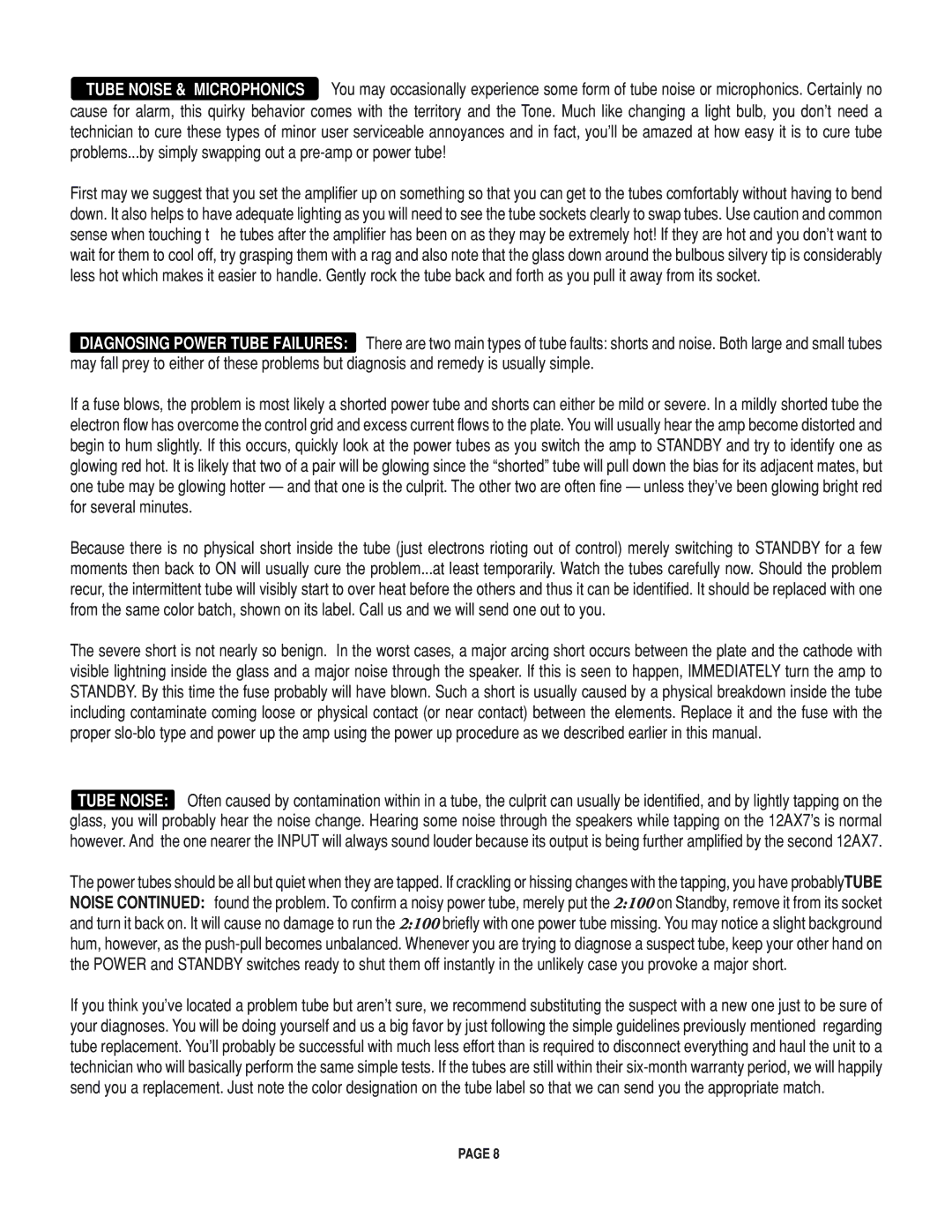Rectifier Stereo specifications
The Mesa/Boogie Rectifier Stereo is a celebrated product in the realm of high-performance guitar amplification. Designed to cater to the demands of both live performance and studio recording, the Rectifier Stereo stands out due to its versatility, powerful tone, and advanced technology.This amplifier features a dual-channel design that allows guitarists to seamlessly switch between two distinct tonal profiles. The clean channel delivers pristine, bell-like tones that are ideal for jazz and pop, while the high-gain channel unleashes a ferocious, saturated sound that caters to genres such as rock and metal. This flexibility is further enhanced by the inclusion of three distinctive modes for each channel, offering players a wide array of tonal possibilities.
One of the signature technologies of the Rectifier Stereo is its Multi-Watt power switch feature. This innovative design allows players to choose between different wattage configurations—50 or 100 watts—enabling them to dial in the perfect amount of power for any performance setting. Whether you are playing in a small club or a large arena, the amplifier can be configured to deliver optimal headroom or saturation.
The Rectifier Stereo also incorporates the iconic Rectifier sound, characterized by its smooth, compressed lead tones and tight bottom end. Electronic components like the patented "Dyna-Watt" technology improve power delivery and tonal response, ultimate clarity making it suitable for intricate guitar work, while an intuitive EQ section provides precise control over the tonal spectrum.
The amplifier is built with rugged construction, featuring high-quality transformers and heavy-duty casters, ensuring durability on the road. The sleek aesthetic design makes it not only a functional tool but also a visually appealing addition to any guitarist’s arsenal.
One notable feature is its built-in effects loop, providing an easy way to integrate pedals and outboard gear into your sound without compromising tone. Furthermore, the addition of a MIDI interface opens up a world of control options for performing guitarists, allowing them to program presets and switch channels with ease.
In summary, the Mesa/Boogie Rectifier Stereo is a remarkable amplifier that blends vintage warmth with modern technology. Its diverse tonal capabilities, robust construction, and innovative features make it a go-to choice for professional musicians who demand the best in performance and sound quality. Whether you’re a studio recording artist or a touring musician, the Rectifier Stereo stands ready to deliver outstanding results for any musical endeavor.

